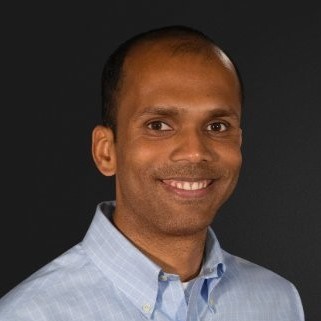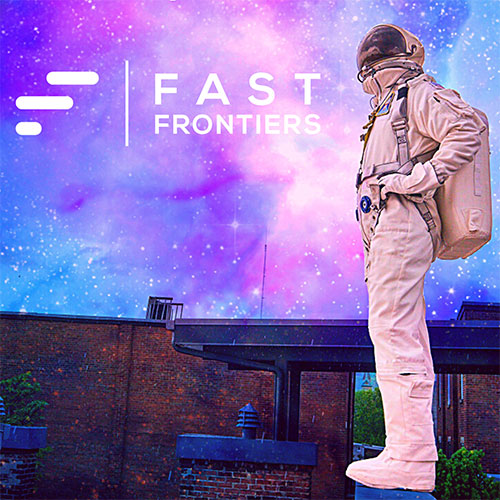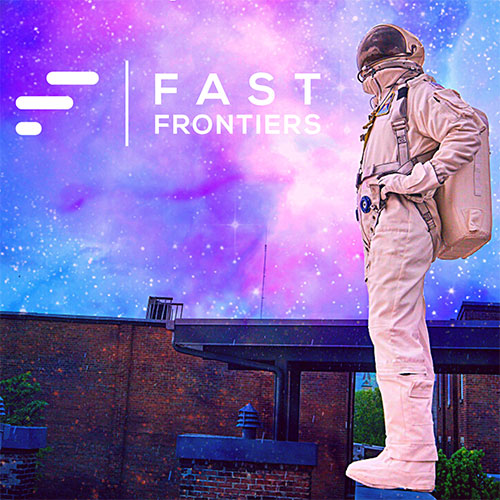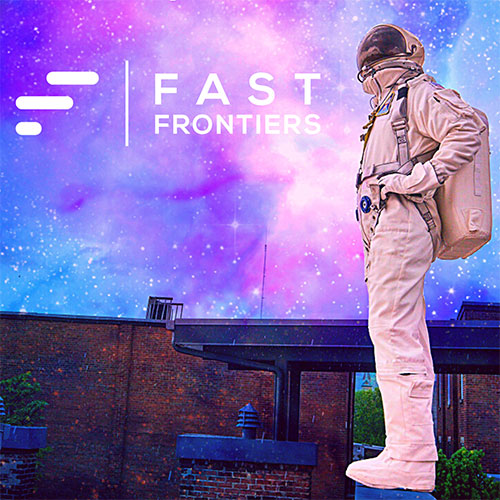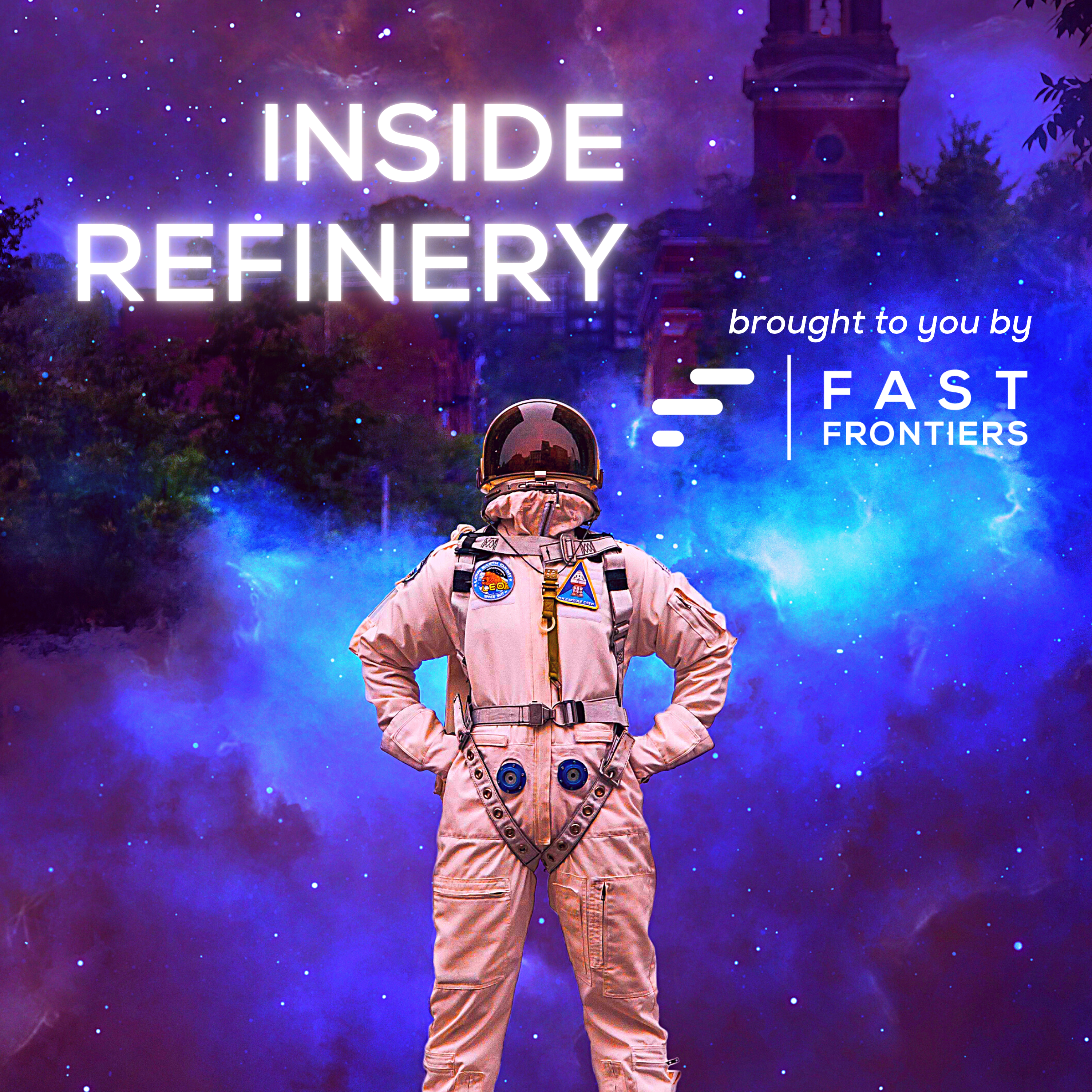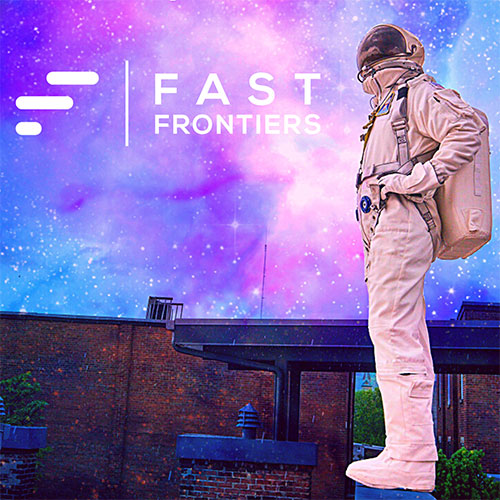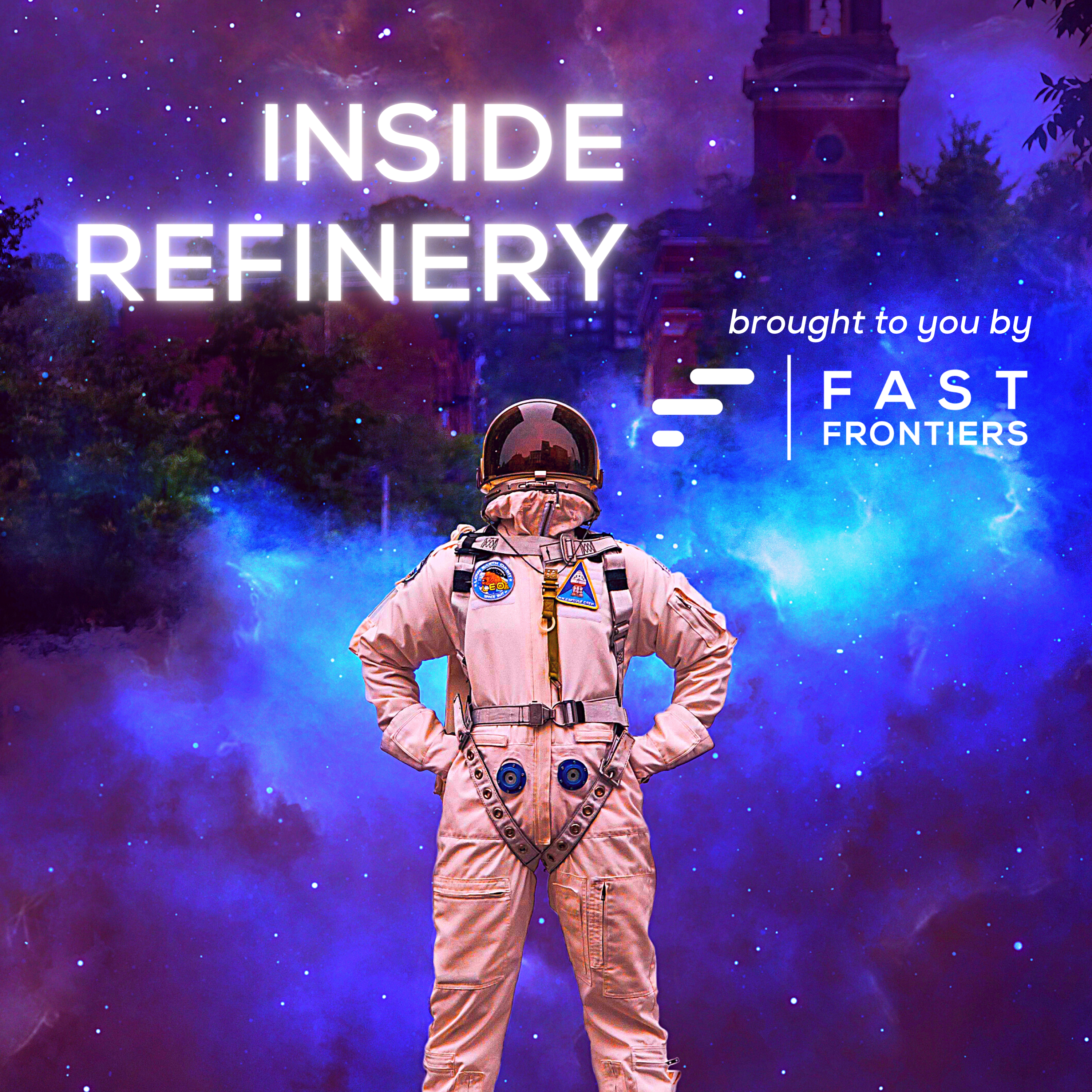S6 Ep. 1 — Gokul Rajaram: Investor and Company Helper
- 0.5
- 1
- 1.25
- 1.5
- 1.75
- 2
Tim Schigel : Welcome to Fast Frontiers. I am your host, Tim Schigel, managing partner of Refinery Ventures. In this episode, we're talking to my good friend, Gokul Rajaram. Gokul and I met when I was launching ShareThis. I asked him to be an advisor. He was the director of product management for Google Adsense where he launched that product very successfully and went on to have a terrific career as VP of advertising at Facebook early on, Square where he was part of the executive team and DoorDash, where he leads Caviar, their premium food ordering service. Gokul is also on the boards of Coinbase, Pinterest and The Trade Desk. He's a prolific angel investor, terrific human, good friend, and the best product person you could imagine. There's so much to learn from Gokul, but the biggest theme or so what that I hope you take away from this conversation is to stay focused on the problem, not the product." Stop celebrating features," as Gokul says." Keep setting goals and solving problems." So please enjoy my conversation with Gokul Rajaram. Gokul, welcome to Fast Frontiers. I'm so glad you're here. This has been a long time coming.
Gokul Rajaram: Tim, it's awesome to be here. Thank you for having me. It has been a long time, but we are here now. Finally, its happening.
Tim Schigel : We're here. We're here. We've managed to carve time out of our schedules to get together, to lay down some wisdom for some entrepreneurs, hopefully. I can't think of a better person to have this conversation with the amount of experience you have your own operational experience, as well as the number of startups that you've invested as angel investor. It's probably somewhere in the order of couple hundred thousand, I would imagine at this point, right?
Gokul Rajaram: Sometimes, it feels that way.
Tim Schigel : So you and I met when I was starting Share This and you were still at Google and launched Google Adsense and came out as advisor for just a short period of time before you went on to Facebook and continued with your legendary career and we've stayed in touch. I really appreciate that. Love checking in with you. You've given some great talks about what it means basically to be a product manager, how to make decisions on products and strategy. And there's so much there. So I want to be able to kind of see if we can add to that today, but start out at least with a little bit more on your background and what has shaped or formed your lens on technology in the startup world?
Gokul Rajaram: I still remember those days of riffing on advertising technology when you're running shares and I was at Google. It's interesting. I think when I look back, the influences that have shaped my career have really been two things. One people, and second, I call it curiosity. So I feel being exposed to very high caliber people and being surrounded by high caliber people, makes you better at everything you do because you get challenged, you get questioned. So I always encourage people to join environments where you feel that you're not going to be the smartest or the best person in the room, but there are people who are much better or smarter than you and I tried to... I didn't actually follow this consciously, but I ended up in environments where I was never the smartest or the best at anything, but there were always people who I could look up to and learn from, and constantly aspire to be better at, whether it was Google or Facebook or Square, or even a DoorDash..
Tim Schigel : Did some of that come from your family and your upbringing?
Gokul Rajaram: I think it does. My dad was an engineer and my mom was a teacher and part of the thing they instilled in me was just trying to keep learning, try to be humble. And it's not about what you accomplishment, it's about what you can learn and get better at every single day. To me, I was meeting with a product manager pretty early in the career. They said," Oh wow, I've been looking to meeting with you. You're the guru." I said," I'm actually the learner like everyone." I don't want to think of at all. As soon as you start thinking of yourself the guru, that's it. I think you mentally plateau and you decline. You've got to think as a learner. Even Elon Musk, every day is learning new things. Every single one of us can learn: Warren Buffet, all of these folks, Bill Gates. I think the learning mentality and that I think comes with surrounding yourself with people. There's a saying that you're the average of the five closest people you are friends with. But I think it applies to work also, it applies to everything. So if those five people help you raise your average, you're going to be better every single day. The second thing is curiosity.
Tim Schigel : That's probably why you do so much investing. That's why I do it. I feel like I'm a student of how a business formation business structure, every day you're learning. And that's what makes it fun. And you start building organizations with a clean piece of paper every time.
Gokul Rajaram: Exactly right. I think entrepreneurs... I mean, that's why you go in with a completely open beginner's mind to these meetings, with these entrepreneurs. And if you do, you can learn so much from them. I think if you go in with a,'I know it all, I'll teach you this'. No, no, no. You got to just go with a beginner's mind and that hence massively. The other thing, Tim, that has shaped my outlook is curiosity. I'll give you a story. When I joined Google first, I was a product manager on search syndication where we would basically take Google search and Google ads and syndicate it to other partners like AOL and others. I was working on various products in that front. And then I started around 17:00, 18: 00 PM, after people would go home, most people. I'd finished my work for the day and I'd be walking around the offices. Google back then had offices by four, five people who sit in a small office. I walked down the corridor and I came across five engineers or four engineers in an office working on something else, like," Hey, what are you doing? What are you working on?? I would just introduce myself. I'm new, two months old. And they were like," Oh yeah, Sergey Brin, the co- founder of Google, he told us to start exploring how to use the search technology, the technology that essentially converts keywords into topics to do the reverse, to figure out how to take a back page and extract what topics are most meaningful on that page and then show ads on it. And we've just started to do some explorations and there's some promising results. We don't quite know how to make it into a product." So I was like," Oh, that's cool. Can I be your PM? You don't have any PM." Well, they were like," Yeah, but you just told us you're working on the search syndication stuff." It's like," Yeah, that's true. But that's just my day job. I can work with you in the evenings." So I basically started just doing that in addition to search syndication. After a couple of months, it became clear that product was going to be essentially... I started essentially doing presentations for them, writing their presentations, figuring, going and talking to publishers, getting customers, trying to do all of the stuff that PMs do, in addition to my day job. Three months from then, my boss saw that and basically pushed me and essentially put me a hundred percent on that. And that probably became Google Adsense. And so, always give that as an example of just being open minded and asking people. Almost every good opportunity I feel that has come my way has not been because of a structured process, it's been just being curious and open minded and just asking people," Hey, what are you working on? How can I help you?" And if you just do that enough times, good things happen.
Tim Schigel : Yeah. I always tell students something that I benefited from was just cold calling people. People love it if you call and you ask questions. You say," Hey, you know what? I'm curious about something. I just want to know."" Wow, I'm glad you asked that question. That's a good question." Its amazing.
Gokul Rajaram: It's a good party trick also, actually. If you meet someone at a party expressing curiosity about what they're doing, is the best ways to start a conversation."Oh, that's so interesting. Tell me more." Because people are shocked, I'm an accountant." Oh, that's so interesting. Tell me more." People want to talk. People want to tell you more about themselves and what they're working on.
Tim Schigel : Right, absolutely.
Gokul Rajaram: Tell you their bonds and connections. The other thing, I think a lot of people... And that's one of the challenges with, I think not being in person, they got to find new ways of building relationships at work because relationships... Look, we've now had a relationship for 15 years now, Tim. Even though now we live in different parts of the country, we still are very easily able to communicate because we used to meet other in person quite often, 15 years ago. And that has translated and we built a deep relationship. I think over zoom, you form certain kind of relationship. And I think it's up to us to figure out how to build deeper relationships, which are not just focused on very transactional things, but are just helping others and helping each other.
Tim Schigel : Well, I'm hoping that young folks value that even more. We may have taken it for granted back then, now they don't. If you entered the workforce in this COVID era and you've missed that, I'm hoping that they go," Oh, you know what? We need to do that in a much more intentional way."
Gokul Rajaram: 100% agree.
Tim Schigel : You're known, and you developed this SPADE framework, S- P- A- D- E. Do you want to just tell the listeners a little bit about that and then we'll go from there?
Gokul Rajaram: Yeah. I'll give you the story. A story is always more interesting around. It's a decision making framework and there are two stories associated with it. One, is how I even started rethinking decision making. Basically, I was at Google. This was in 2006, I think. I was working on display advertising as part of Adsense. And I was in a meeting with Eric Schmidt, the CEO of Google back then, and we were presenting something, I forgot what it was. Something related to do the ads business and the discussion got heated. And then Eric basically said," Hey, hang on, stop. Who's responsible for this decision?" And I'm mortified to say that three people including me simultaneously raised their hand and Eric was like," Hang on. Three decision makers means there's no owner of this. Three owners means there's no owners. I'm ending this meeting right now. And I want you to leave the room. I don't want you returned here until you figure out who the owner is." With that, he adjourned the meeting and he dismissed us. And that made me realize that consensus is not a good way, not a good decision making framework because by trying to make everyone having an input integration, no one truly owns the decision. And so, it really came to crystallize when, at Square, many years later, about seven, eight years later, we did a survey of employees like many companies do, the employee pulse survey. The number one reason with dissatisfaction in 2014 was that people said decisions were not transparent. It was not clear how decisions are being made, how they were communicated, who was making them et cetera, because we were making a lot of decisions, big decisions and people just found out about them later.
Tim Schigel : That's interesting. Yeah, because you talk about being transparent in a company, but I hadn't and... Showing stats and metrics and communication. But that's an interesting one that, I don't know where decisions are being made.
Gokul Rajaram: Because, people are confused. People don't know how to get decisions, how to make things happen. And so, at the All Hands we typically used to present once every three months the results. Jack Dorsey, our CEO basically said, I see that this is the top thing. I think I was scheduled to present right after him on something. He was like, he saw me standing waiting in the wings. He's like," Gokul is going to come back in one month or three weeks with a solution to this decision making." I was like," Okay." And then basically when you make that kind of announcement in front of the company at the all hands, then you're like," Okay, now you have three weeks to figure out what to do about decision making." So I went back to thinking about the Google days, got a couple of people together and we basically, just broke down decisions. We said," We have to start with the thesis that consensus doesn't work." And so we came with this framework that really, it should have been called P- S- A- D- E because it's the most important thing of our decisioning is the people involved and who the decision maker is. But for the ease of mnemonic of acronym, we call it spade and each letter is an acronym. S stands for setting, which is the what, when and how of the decision, what you're optimizing for, when you need to make it, what the decision is. What is crazy is, many times people can't articulate exactly what the decision is. For example, you might say," Oh, I want to decide what country to launch in next." But actually that's a broad question. That's not a specific enough decision because if you're a multi- product company, the question is what product to launch and what company to launch it in. So the goal is to really be very specific. And then the other thing people are not clear about is, what you're optimizing for? So S is all about what are you optimizing for? What's the decision? When does it need to made by et cetera? The context. The P like I said, the P is people, it's arguably the most important part of the decision. It is, who is the decision maker first and foremost? And like I said, it's not about multiple people, it has to one person who makes a decision. And then, there's a set of people who are consulted. And then there's a approver of the decision who typically has veto power, which they use very sparingly, not often. And they only use it if they feel the process has not been followed, much more so than anything else. If they feel the process was not followed properly, that's when they should theoretically use it, but they could use for other reasons, in theory. The decision maker is the most important role. Decision maker should be the person who's also accountable for the results of the decision, because think about all the times that you've been handed a decision that someone else has made and you are supposed to implement it, and you're accountable for success or failure. It's one of the most disempowering things, when you're like," Well, I don't really know how it was made. I don't really agree with that. But now you're telling me that I'm accountable for the success and failure. You've already made the decision and I'm supposed to execute on it." We feel that you need to align execution, accountability with decision making and have that person," Okay. You made the decision? Great. Let's see how you execute on it and let's see you own the decision, essentially. Not just on making the decision, but on executing, implementing the decision." And then A is around alternatives, which is around what are the different ways? What are the different choices that you have, which is again, really interesting. Many companies or many, many teams we saw initially one of the failure cases was, they tried to get into micro variance of the same kind of choice. For example, if you have pricing decision, we had a team that presented," Oh, we're going to have pricing, which is 5.5% or 5. 75% or 5. 8%." We were like," Hang on. Did you first explore at a higher level? Should you have 5.5% or 4% because 30 cents, which is a percentage in a flat fee, which are very different kinds of pricing and for obviously for different things. Let's first make the decision of whether you want to go with purely transaction percentages, pricing, or percentage based, plus a flat fee pricing." And then, we can figure out what percentage makes sense. And so, you've got to make sure options are sufficiently different from each other, that you are exploring all parts of the solution space versus their micro variations of the same thing.
Tim Schigel : Often, it seems like... Let me know if this has been your experience. People will maybe talk about that, kind of improvise on what those alternatives are versus going, doing the homework, benchmarking saying," Hey, here are the 405, and here are the implications of each. Now let's decide."
Gokul Rajaram: That's exactly right. That's why we want the most time to be spent on the A. In fact, what we started doing at Square once we saw that people were doing the D and E. D is decision, the actual decision, arriving at the decision and explaining it, they were just shoehorning. They were just creating some options just to kind of justify the decision and then presenting it. So we said," Okay, we are not going to make a decision at all right now. You're going to spend... We just called it the spa process. We said, you're going to spend most of your time. We're going to spend a month actually coming up with all these options. And then you're going to flesh it out." Like you said, Tim. You're going to really flesh out the quantitative implication of each option and compare them against what you're optimizing for the objective function. The important thing to notice that this framework should not be used for the day to day reversible decisions. It has to be used for any decision making framework is by nature, somewhat heavyweight. So it be used for things that are more irreversible one- way door decisions that are hard to reverse, that are more gravitas, that are more important to make, and that are fewer and fewer. You can't use them for, we call, we use a joke, what fair kombucha to? Select out of the company, the snack model. That's not what it's for. It's really for things like country. And once you enter a country, you're not going to be able to exit that country easily for years. I prediction, so there's risk all kinds of risk. So should you enter a country? Which country should you enter? Next huge decision, huge decision. And so those kinds of editions are naming. It's hard to reverse once you've name something or pricing also very especially hard price. So bunch of things that are hard to reverse, integration planning like M&A is a very good one, right? M7A is a great one. M&A is actually excellent. If you think about the three options, build, buy, and partner, and you got to flesh out all three. You just blindly go in, no, well, good company will ever say," Yeah." They'll always say," What does it take to build? Why are you buying? And can I partner and get most of the economics, most of the upside to partnership?" You got to flesh it out good .
Tim Schigel : But if you don't have those options, then you're not really making a decision.
Gokul Rajaram: Exactly. We're just like... Exactly, exactly right. That's a framework. I think it's been now adopted by more companies. In general, I realize these frameworks all, I think, important, but what is important is I think are useful. But I don't think that there's other frameworks like R- A- C- E, RACE or Race, there all these, but it doesn't matter what framework used. It's good to use it, it's good to know. It's most important to figure out which decision use it for. And then, you've got to know the right person that's making the decision and driving the process, makes a huge difference.
Tim Schigel : What's interesting on the alternatives, I think, that is sometimes the hardest work.
Gokul Rajaram: The hardest.
Tim Schigel : What it makes me think about is, my daughter studied industrial design, top design schools in the country. What they did, it was the hardest thing for them to do. They had to do a project for the weekend, for the night, go do 50 sketches of alternative ways to do a chair. The important thing was not that the sketches had to be good at all, right. But they had to think about how to create all these alternatives, alternative designs just at the basic level. As I watched her, that was the hardest part of everything. And it becomes one of their greatest capabilities later in life because they learn to explore alternatives first. And once you do that, it makes it so much easier and gives you confidence when you go down the path that you finally choose to go down.
Gokul Rajaram: Such a great story, such a great story. Love it. Exactly right. That makes the point very powerful.
Tim Schigel : So, one of the things we talked about when we're getting ready to have this conversation was, this title product manager. As we're focused on helping entrepreneurs, build cultures around leadership and customer focus, I have a little hard time with it because people often fall into the trap of falling in love with the idea versus the problem, right. So, how have you seen organizations do a good job, staying focused first primary on the problem and not the product?
Gokul Rajaram: It's a great question. I think, it's a great question and a great statement that ultimately it's true. What matters at companies? I think I always tell... In fact, you articulated something very perfectly. When people say," Should I start a company or not?" I asked them the first question," Is there a problem, a customer problem that keeps you up at night?" Until you have that, until you're really the problem is what... Because the problem, it's almost a not start thing that you want to accomplish and solve. And that through ups and downs will inspire you. If it's an idea or a thing that you want to do, but you don't know why you're doing it, that's not going to sustain you through ups and downs, inevitable ups and downs. So, you have to start with the why, the problem. And so, I think companies that do this well first, they start with the thesis, which is, why are you doing this? In other words, they don't just... Any product... I think, product teams can very quickly fall into the danger of being feature factories, where they just come up with ideas and just," Okay, I'll implement this feature." And you ask them at the end of the quarter, what they accomplished. They'll just say," Here's the list of features I launched." And this is to a very large company. Also there's a large company I'm an investor in, quite a large company and they were presenting their product roadmap and they were 10 features. I'm like," Folks, this is great, but what is the impact of the features? Why are we doing these?" And they didn't really have a good answer for them. They were like," Well, we feel that these are the right features to build." But like you said, I think ultimately you've got to start. What do you start with? You start with business outcomes, first and foremost. What are the business outcomes you want to accomplish as a company? From there, you want to see what are the customer outcomes? So business outcomes are things like revenue, GMV, gross profit, in net income, et cetera, financial state things. And even things like MAUs, DAUs, monthly actives, all of those things, our retention numbers, et cetera, business goals. So if you want to improve conversion, you can improve conversion in many different ways. Ultimately, what you want product teams to do is you want them to really build out this tree almost, and group products or group ideas into what problems they're solving, what customer behaviors they're changing and what opportunities they focused on, changing it. I think that's basically how we should organize teams. Teams, product teams should be organized based on either changing customer outcomes or even around opportunities. Ideally, it should be product because those are empowered product teams because then product teams are not gold, based on, do you launch a feature? A CEO who told me the other day," Well, my goal, I'm going to tell the product team to launch an iOS app." I'm like," That is the most disempowering thing you're going to tell them to do because why are they launching it? What's the reason?"" Well it's to improve the DAUs because if you have an app, people will use deep service more often." Give them that outcome and let them figure out if they want to do it to launching the iOS app is they might not have the ability to do in a quarter maybe, or with the timeframe you want. Is there a better way just with the website to do it, or whatever the cases they want to do, but give them an outcome. Give them an outcome and have them manage an outcome and manage them to an outcome.
Tim Schigel : That's the great way. A lot of people ask,"How do I know if my mission is clear and compelling, what's the test I can use." And you just gave the perfect roadmap. What's the change in behavior of your customers? What change in behavior do you expect? And if it's no change in behavior, there either no value or it's commodity product, you're just doing something somebody else does.
Gokul Rajaram: Exactly, does the feature even matter if it doesn't result in a changing in customer behavior. It's like, a tree falling in the forest. If you launched a feature and there no change in custom view you can discern, does it even matter? Does it even matter?
Tim Schigel : Absolutely. How often do you think companies should think about testing it and revisiting it because that changes over time, right. It's not a static thing. Just like product market fit. You think you have product market fit, but you're never really done. And the environment's changing. So, how do you think about the frequency?
Gokul Rajaram: In an ideal world, almost every feature should be a hypothesis because, what is a feature? Ultimately, a feature is a hypothesis to basically target a certain opportunity to change customer behavior. And we don't know, look, I think we have say six different options, six different features we could launch to change this customer behavior. We don't know which one will actually change it. We are guessing based on data, based on customer interviews, based on intuition, et cetera, we're guessing. So, instead of spending a lot of time and effort and energy to launch this thing and then see two, three months down the road, it's true. Our advantage as a product team to quickly get a directional read on it, but doing something scrappily, what can we do to approximate this feature in some way, shape or form even maybe without using any engineers? I always try to challenge product teams. If you had zero engineers, could you implement this feature? Could you implement some? Obviously, not this perfectly. Could you implement some facsimile of this feature using no code tools, using Squarespace or Bigly or Vex or something and building a simple webpage by using email. Email Your customers. There are all these blind things you can do or smoke screen things. You can just put a button there. It doesn't lead to the feature, where you take them to learning and get them to choose something. And then you say," Sorry, we're working on this, but you register the interest this way. They're actually making so." I think you've got to try to figure out how to get more data, because we all know what customers tell you is different than what they do. And so, the only way that you can, I think very quickly, move and I strongly believe that product teams that can test hypotheses quickly are the ones that win. So you can't wait for three months to test a hypothesis. If you can test one in two weeks in one way, shape or form and get signal, and then you decide," Okay, should I then invest more resources into fully fleshing it out? Or should I go onto my next hypothesis?"
Tim Schigel : It's like a muscle that the company organization needs to develop, kind of culturally.
Gokul Rajaram: Exactly.
Tim Schigel : And so many don't. You see so many that they assume that their feature's really great and it's going to be perfect or they don't test enough alternatives.
Gokul Rajaram: Exactly. with the engineers. And it comes from, I think, thinking that every feature has to build by engineering and engineering is a scarcest, most expensive resource. Engineers also are upset when they do something and it doesn't work out. They're much happier if you get data." Look, we did all this work. Look, 80% of customers are clicking on this. We just need to build this other thing and it's going to...."
Tim Schigel : Right. Development's a whole lot easier when you know the target, when you know exactly what you're building, when you're still guessing and making it up along the way, that's where you lead to projects that are late and complicated..
Gokul Rajaram: Not effective-
Tim Schigel : They're not effective.
Gokul Rajaram: They don't need... They change customers. Exactly.
Tim Schigel : Yeah, absolutely. I'm kind of thinking, how has this changed over time over the last 10 or 15 years? What are some of the latest tools that you've seen that help organizations do a better job in this regard?
Gokul Rajaram: I think the biggest one, I think is a rise of product analytics as a function. I think back 10 years ago, analysts, business analysts, they would create dashboards, report on performance of the business, the rise of product analysts, which are now increasingly I treated about this a few months ago. I increasingly think the product engine, design team should be a quartet, not a trica and product analysts should be an important part of it. Because, when you are running experiments, when you're running testing hypothesis, you also need to make sure that your experiments are run on unbiased samples and if you're running an experiment, the results are statistically significant to be able to conclude things. Analysts can actually do many good things. They can help you figure out what your goal should be, first of all, because you have a certain set of... One of the things said as teams start working together, they get a better intuition of what their goals should be, but it's still somewhat rough. With an analyst, you can be much more precise about setting good goals. Second, they can help you get data to choose between different options. Roughly, like you said, initially, you don't have data. You want to try experiments, but which of those features should even experiment on? They can give you some more data. And third, they can help you make sure they're running the right, correct... Experiments are being run in a scientific way as scientific way as possible in the real world, early, early. So I've seen good product analysts. I think companies still... Actually, when I joined Square, one of the rules I put into place is, launch does not equal success. We should never celebrate feature launches. What does the feature launch? You should launch something that doesn't mean anything or success should be customer adoption, customer behavior change. Go outcome change, business change.
Tim Schigel : Hypothesis, confirmed.
Gokul Rajaram: Hypothesis confirmed, exactly. Right.
Tim Schigel : Right.
Gokul Rajaram: It's like a science experiment. Do celebrate when you actually run the experiment? No. When the hypothesis is verified, that's when you celebrate. And so, I think a lot of companies, unfortunately, if you look at all the press releases, right. It's like," We launched X, Y, Z."" Okay. So what? Tell me exactly," and many times they're not because they don't have anything.
Tim Schigel : And you see people put that in their OKRs as well.
Gokul Rajaram: Exactly, exactly. Okay. So I think I like saying feature launch is not a goal, feature launch is not an outcome. It should be called an experiment, which is slowly rolling out a hundred percent and we should not even roll it out. In fact, I'm not going to let you launch this feature until you prove it, 1% or 5% of it because additional feature makes life more complex for the customers. I'm not going to let you launch this feature and make their life more complex until you prove to me that the small audience that they're working with, have product market fit for their audience. Are actually changing behavior in the way your hypothesis said it would. Are actually using the feature, loving the feature, like random things, whatever the case may be. So that's some of the best practices where you don't let teams actually launch things broadly until they've proven out the hypothesis.
Tim Schigel : So what are some of the areas that you're particularly interested in from a technology and investing standpoint?
Gokul Rajaram: I think Crypto and Web3. I sit on the board of Coinbase. So I think Square was very early in Bitcoin, 2000... Well, not very early, very early would be 2013, but moderately early 2016, 17. And so, that's when I first got to read the first Bitcoin papers because, Jack, our CEO at Square was very much an evangelist of Bitcoin. So he really encouraged everyone. The management team even had Bitcoin summits, cryptocurrency summits within the company. And I think all of, much of Square got into Bitcoin. And then that's when I got into it. And then was just more academic, but then joined the word of coin base. So have a front row into some of the developments there. And I think there are so many possibilities. I think even seeing the two prominent most prominent tokens, one is Bitcoin, which is definitely more of a store of value. People call additional gold. Then you have ether, which is much more of a programmable layer for Web3 and so on where you can build applications on it. You can be decentralized applications that you can build. Morph it into all these different ways. So, the applications are endless. I think, like with any frontier technology, there's risks, there's various scams and frauds. But I think if you look 10, 20, 30 years from now, and that's why you see many young smart people going into Crypto. I think a lot of people are leading Web2 companies. The other interesting thing I'm seeing from the investing perspective, Tim, is I'm seeing a lot of Web2 technologies, infrastructure technologies being rebuilt for Web3. For example, I've now seen analytics like amplitude and mixed panel, et cetera, rebuilt for Web3. I've seen social networking now being rebuilt for Web3. I'm seeing things like segment and marketing tech being rebuilt for Web3. Seeing MailChimp and messaging, even things like messaging and email don't really exist in Web3, so they're being rebuilt because the wallet is the ultimate consumer here. Instead of a consumer identity, the wallet is a consumer identity. So people are trying to figure out," Okay, how do I build analytics around wallets? How do I build social metrics around wallets? How do I build identity or wallet? There are all these interesting things you can build, around wallets and then around the blockchain itself, there are all these protocols. How do you connect them, bridge them? How do you make one of the challenges with transacting in crypto today is transaction fees are quite high. They're called gas fees. They're quite high because there's a lot of compilation that happens. So how do you lower gas fees? And also, number of transactions per second is not very high. So there are newer blockchains that are in increase of throughput and lowered the fees with initiatives there. So lots of interesting and funding driven. I think it's so much that you can't keep track of all of it. And you've got to, as an investor, got at any point in time focus on one segment of it. And we, go deep because there's just Cambrian innovation explosion. The other thing that would realize is, it's a global market. Found the best teams are in Asia, India, et cetera, because it's completely level playing field now. Unlike the US stock market, which are only open certain times of the day and only allowed only certain people can participate in it. As market makers, anyone can come with a... I mean, I have friends who have created just fake tokens in their own name, the Scott token, someone send me to a wallet hundred Scott token, which no value, but I was like," Wow! I didn't know that you... That was like, how easy?"" Yeah. I just created tokens in my name super easily. So you can do all of these cool things and play around with creating new currencies.
Tim Schigel : It is amazing. And like you said, it's early. I mean there's decades of innovation that's going to come out of this.
Gokul Rajaram: Exactly.
Tim Schigel : And maybe in today's current market environment in particular, what kind of pieces of wisdom would you share with entrepreneurs who are raising money, who have raised money, who are trying to build companies in this environment?
Gokul Rajaram: Yeah. It's an interesting environment, isn't it, Tim? You and I are both seeing it. I mean, volatility is just off the charts. Anyway, I think the key two or three things that I think hold constant to all these cycles is one. You've got to focus on a problem and you've got to make sure that the customer job is real. I think a lot of... Especially B2B, a lot of entrepreneurs. I think sometimes mistake. I think someone said this, when you ask a prospect," Oh, do you like this? Do you think this is an interesting problem? Or do you think I'm building this..." A lot of customer interviews focus too much on the product you're building versus forget the product I'm building. What are your top three problems? And so, you realize that sometimes the problem you're trying to solve, they'll say when you ask them, is this problem interesting? They'll say," Yeah, that's interesting. When you ask them for what are your top problems, forget what I'm building. They'll have a completely different set of top problems. So if it's not a top problem target customer, they're probably not going to buy it. They're not probably going to consider it. It's not a hair on fire problems. You've got be solving hair on fire problems for your customers, whatever they are, whoever they are. I think that's really important. And if you're not, and if you're solving a nice problem, there's just too many companies solving nice problems. And so that's one. Second one is, I think, you really need to make sure that you understand what it means to be a venture back company. It's going to be somewhat different now. I think a lot of folks just feel just like money raising like," Oh yeah, I raised a round. Whose going to raise an external next or exon has it
Tim Schigel : Best goal or the outcome?
Gokul Rajaram: Exactly. Exactly. That's not the goal. That's not the goal anymore. So, you got to really understand what it means. In many cases, the answer might be not to raise more money period, get to cash flow positive, control your destiny, because guess what? With every round you race and some of our friends who raced rounds that last year had crazy valuations go through some pain this year or next year. You no longer control your destiny at that point because you have too many folks around the table. You basically have lost control of this baby of yours, where maybe raising less money at a lower valuation and controlling and getting to cashflow positive faster, would be better. And the third one is burn kills. I realize this even the best companies, if you're burned and there are many ways that you can measure your burn relative to your progress. But if you're burning too much energy or progress, it is going to, you are going to be in for a world of pain, I think. And so, obviously, as someone said to me, you can't starve your way to greatness. So that doesn't mean you've got to, but you've got to be very careful. Especially if you raise a lot of money, doesn't mean you have to spend it instantly. Please be careful. Please make sure that you're hitting milestones. Please make sure you're looking at things like rule of 40, efficiency of sales and marketing spend, all of those things are you cannot be very careful. Burn kills, burn absolutely kills.
Tim Schigel : And that's the environment of starting a company in a tougher environment or a down market is, it creates more focus, ideally, and more discipline.
Gokul Rajaram: That's exactly it.
Tim Schigel : Understanding," Hey, what are my alternatives? Should I make this investment or not? Do I need to preserve cash, et cetera?"
Gokul Rajaram: Exactly. Focus on fewer things. Focus on the fewer things instead of doing 10 different things, focus on, ideally, one thing that most great companies have one... Amazing Google search still today, the most of their business is the thing, right? And then if companies are really lucky, they get two things.
Tim Schigel : It can last time a long time.
Gokul Rajaram: One thing can make you really good company.
Tim Schigel : That's awesome. Well, thank you, Gokul. Thanks for taking the time and sharing your thoughts and insights. Its great to have you on Fast Frontiers.
Gokul Rajaram: Tim, it's awesome to be here. Thank you for having me and thank you. Great to have this discussion.
Tim Schigel : Join us next week when we bring you my conversation with Dave Mawhinney, executive director of the Swartz center for entrepreneurship at Carnegie Mellon university. Thanks for listening to Fast Frontiers. If you like our show and want to know more, check out our website, fastfrontiers. com. If you've enjoyed this episode, please share it with others and leave us a review on your favorite podcast platform. The Fast Frontiers podcast is brought to you by Refinery Ventures. Our producer is Abby Fittes. Audio engineering by Astronomic Audio and our podcast platform is casted.
DESCRIPTION
Welcome back to Fast Frontiers! In the Season 6 premiere, Gokul Rajaram talks with host Tim Schigel about working as an investor and "company helper." Gokul does a deep dive into his SPADE decision-making framework, about creating compelling products that solve real-world issues, and the rise in product analytics as a function of business.
Today's Host
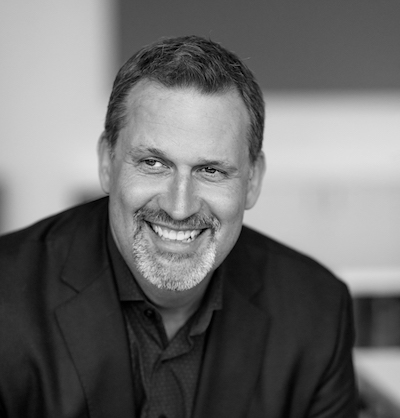
Tim Schigel
Today's Guests
